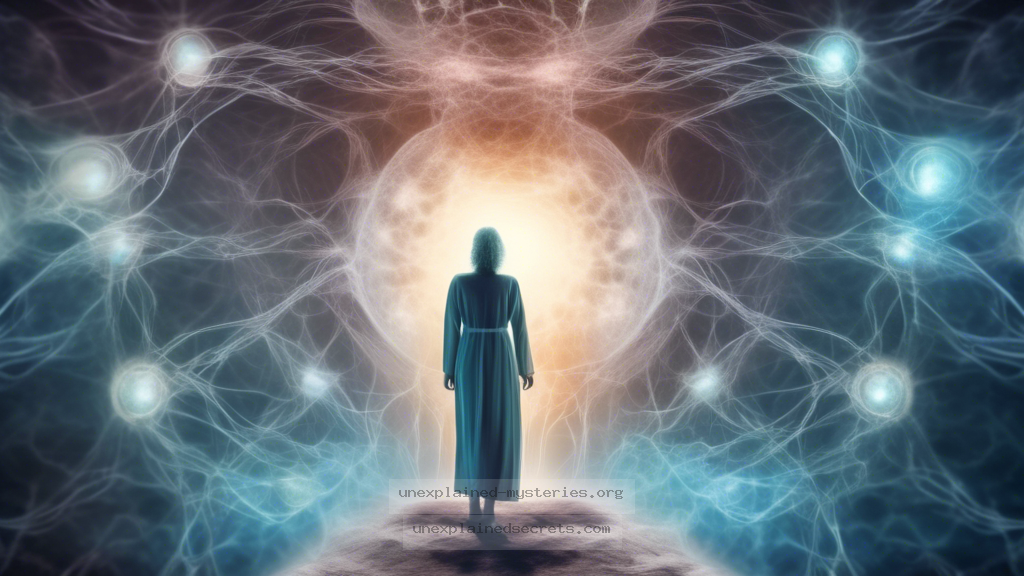What Do Near-Death Experiences Reveal About Consciousness After Clinical Death?
What Do Near-Death Experiences Reveal About Consciousness After Clinical Death?
Near-death experiences (NDEs) have long captivated the minds of researchers, scientists, and spiritual seekers alike. The question of what happens to consciousness after clinical death is as profound as it is perplexing. As people recount their experiences of floating above their bodies, encountering deceased loved ones, or traversing through bright lights, the implications of these stories challenge our understanding of life, death, and the nature of consciousness itself. Exploring this question not only has the potential to redefine our perceptions of mortality but also offers insights into the very essence of being human. 🌌
Historical Context of Near-Death Experiences
The phenomenon of near-death experiences is not new; accounts of NDEs can be traced back through history. Ancient texts from diverse cultures, including the Tibetan Book of the Dead and the writings of Plato, hint at encounters with the afterlife. However, it was not until the late 20th century that NDEs began to garner scientific attention. Dr. Raymond Moody’s seminal book, “Life After Life” (1975), popularized the term and conducted one of the first systematic studies on NDEs, detailing accounts from individuals who had experienced clinical death and then revived. His work prompted a wave of interest and further research into this mysterious phenomenon.
Core Concepts and Theories of NDEs
To understand the significance of near-death experiences, it is essential to explore the core concepts and theories surrounding them. NDEs often encompass a series of common elements, such as:
- Out-of-body experiences (OBEs)
- Feelings of peace and detachment
- Encountering bright lights or tunnels
- Meeting deceased relatives or spiritual beings
- Life reviews
- Returning to the body
These experiences are reported across cultures and often share striking similarities. Theories attempting to explain NDEs range from psychological and physiological responses to trauma, such as the brain’s release of endorphins, to more metaphysical interpretations that suggest consciousness exists beyond the physical body. The debate continues on whether NDEs are a product of the dying brain or a glimpse into an afterlife. 💭
Practical Implications of NDE Research
The implications of NDE research extend beyond mere curiosity; they touch on profound questions about life, death, and what may lie beyond. For many who experience NDEs, their lives are transformed. They often report decreased fear of death, increased spirituality, and a heightened appreciation for life. This transformation can have practical implications for healthcare providers, particularly in palliative care, where understanding NDEs can help in addressing patients’ psychological and spiritual needs.
Key Insight: Understanding NDEs can lead to more compassionate care for terminally ill patients, recognizing the importance of spiritual well-being in the dying process.
Real-World Examples of NDEs
Numerous documented cases of NDEs have been recorded, providing a wealth of material for analysis. One of the most famous accounts is that of Dr. Eben Alexander, a neurosurgeon who experienced a profound NDE while in a coma due to bacterial meningitis. In his book, “Proof of Heaven,” he describes vivid experiences of traveling through a mystical realm, which challenged his previous scientific beliefs about consciousness and the afterlife.
Another notable case is that of Pam Reynolds, who underwent a risky brain surgery in 1991. During the procedure, her body temperature was lowered, and her heart stopped for several minutes. Upon revival, she recounted detailed observations of the surgical process and conversations that took place while her brain was functionally inactive. Such accounts raise critical questions about the nature of consciousness and whether it can indeed exist independently of the physical body.
Alternative Perspectives on NDEs
While many accept the validity of NDEs as evidence of consciousness beyond death, alternative perspectives challenge this view from various angles. Some skeptics argue that NDEs can be explained through well-established psychological phenomena, such as the brain’s response to trauma or the effects of oxygen deprivation. These explanations suggest that rather than being evidence of an afterlife, NDEs are merely the brain’s way of coping with extreme stress.
Other critics propose that cultural and religious beliefs heavily influence the content of NDEs. For instance, individuals from different cultural backgrounds may report varying experiences based on their spiritual teachings and societal narratives. This raises important questions about the universality of NDEs and whether they can be considered a reliable indicator of what happens after death.
Notable Fact: While NDEs often feature universal elements, the specifics can vary significantly based on cultural and personal beliefs. 🌍
Common Misconceptions About NDEs
Despite the growing body of research, several misconceptions about NDEs persist. One common myth is that all NDEs are overwhelmingly positive. While many individuals report feelings of peace and love, not all experiences align with these sentiments. Some people recount distressing or negative experiences, often referred to as “hellish” NDEs, which can challenge the notion of a uniformly positive afterlife.
Another misconception is that NDEs provide definitive proof of an afterlife. While many interpret their experiences as such, the scientific community remains divided on this question. NDEs can provide compelling anecdotal evidence, but they do not constitute empirical proof of life after death. This distinction is crucial for both scientific inquiry and spiritual understanding.
Best Practices for Investigating NDEs
For those interested in exploring NDEs further, whether from a scientific or spiritual perspective, there are several best practices to consider. First, approach the topic with an open mind, recognizing the diverse range of experiences and interpretations. Engaging with both anecdotal accounts and scientific research can provide a well-rounded understanding.
Additionally, it is essential to differentiate between spiritual beliefs and empirical evidence. While personal narratives can offer valuable insights, they should be complemented by rigorous scientific studies that explore the neurological and psychological aspects of NDEs. Collaborating with researchers, healthcare professionals, and spiritual leaders can foster a multidisciplinary approach that enriches the investigation.
Tip: Reading academic papers alongside personal accounts can deepen your understanding of the complexities surrounding NDEs. 📚
Future Developments and Ongoing Research
The field of near-death studies is evolving, with ongoing research providing new insights into the phenomenon. Advances in neuroscience and psychology are paving the way for innovative approaches to studying consciousness. Researchers are increasingly interested in the nature of consciousness itself—what it is, how it arises, and whether it exists independently of the brain.
Additionally, emerging technologies such as neuroimaging are being harnessed to explore brain activity during NDEs and OBEs. These advancements may eventually shed light on the question of whether consciousness can persist beyond physical death. Organizations like the International Association for Near-Death Studies (IANDS) actively promote research and support individuals who share their experiences, furthering our understanding of this complex topic. 🔬
Conclusion: The Mystery of Consciousness and NDEs
The question of consciousness after clinical death remains one of humanity’s most profound mysteries. Near-death experiences offer tantalizing glimpses into what may lie beyond, challenging our perceptions of mortality and the nature of reality. While there is no definitive answer, the diverse accounts and ongoing research provide fertile ground for exploration.
As we continue to study and understand NDEs, we must embrace both scientific inquiry and spiritual exploration, allowing for a holistic understanding of life, death, and consciousness. Whether one views NDEs as neurological phenomena or spiritual experiences, their impact on individuals and society is undeniable, prompting us to reflect on the nature of existence itself. ✨
Other Articles
Recent Posts
- What Happened to Flight MH370? The Conspiracy Theories That Still Haunt Us
- What Secrets Lurk Within the Walls of the Infamous Trans-Allegheny Lunatic Asylum?
- What Evidence Supports the Existence of Bigfoot in the Pacific Northwest?
- What Happened to the Indus Valley Civilization? Unraveling the Mysteries of Ancient Urban Life
- Can Telepathy Be Scientifically Proven Through Laboratory Evidence?







